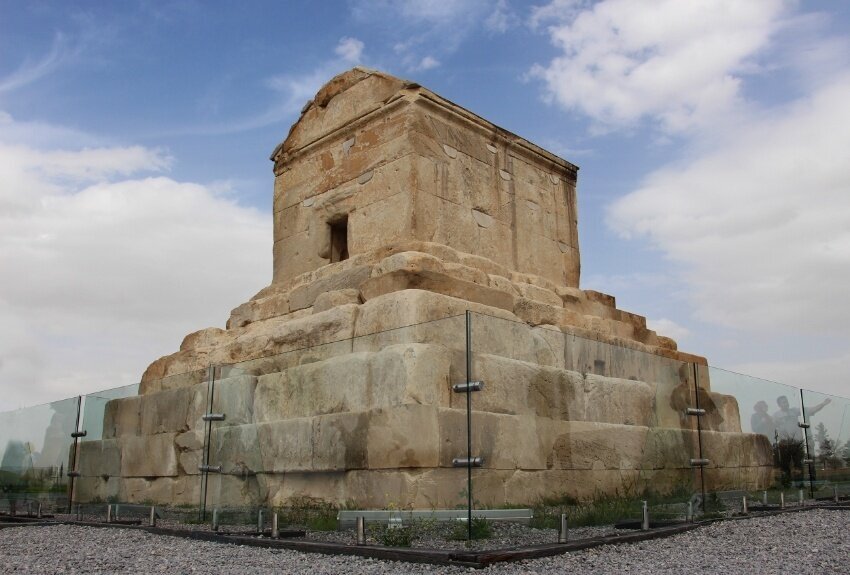UNESCO-tagged Pasargadae being reconstructed in 3D model

TEHRAN – Documenting and creating three-dimensional models of a number of architectural works located in an area of 190 square kilometers inside the UNESCO-tagged Pasargadae in Fars province, southern Iran, is currently underway.
In order to study and introduce identified works in this historical complex, which includes the remains of the tomb of Cyrus the Great, Mozaffari Caravanserai, Stone Tower, Tal Throne, King Garden water ducts, the facilities of the Achaemenid Dam of Bostankhani as well as several palaces, three-dimensional models are being designed, Afshin Ebrahimi, the director of the World Heritage site announced on Wednesday.
The highlight of the project is designing the 3D model of the tomb of Cyrus the Great, which still stands almost intact. Constructed of huge white limestone blocks, its gabled tomb chamber rests on a rectangular stepped plinth, with six receding stages.
The models have been designed based on aerial photographs taken by professional cameras and drones with the use of digital technologies, the official added.
Having the ability to rotate 360 degrees, makes the models unique in terms of having all details of inscriptions and reliefs, besides the architectural features of each structure, he explained.
The project which is being carried out in collaboration with the private sector will come to an end by the end of October.
Situated in about 50 km north of Persepolis, Pasargadae embraces outstanding examples of the first phase of royal Achaemenid art and architecture and exceptional testimonies of Persian civilization.
However, during the time of Darius I (reigned 522–486 BCE) Persepolis replaced Pasargadae as the dynastic home and Pasargadae stood alone.
Cyrus was the founder of the Achaemenid Empire which at its greatest extent stretched from the Balkans to the Indus Valley, spanning 5.5 million square kilometers. The Persian king declared the world’s first charter of human rights, also known as the Cyrus Cylinder.
Despite the minimal nature of the ruins, they make a good introduction to the wonders of Persepolis, some 60km to the south. Best visited en route from Yazd or Isfahan to Shiraz, most people fit them into an extended tour from Persepolis with stops at Naqsh-e Rostam and Naqsh-e Rajab.
The complex was designated a UNESCO World Heritage site in 2004.
ABU/MG
